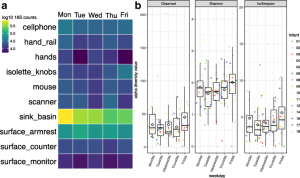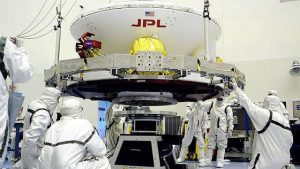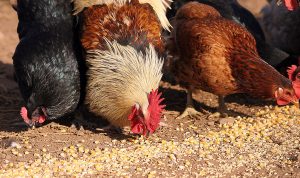The Alfred P. Sloan Foundation has approved a grant to host a workshop on viruses in the built environment. Building on the success of the foundation’s Microbiology of the Built Environment program, the workshop will convene researchers from academia and government agencies to address questions about the viral community and its dynamics in the built …
Very torn about this. On the one hand “Microbiology of the Built Environment” by Jack Gilbert and Brent Stephens is a great summary of the current status of the field. On the other hand, it’s behind a paywall and I can’t access the article from my house where I am currently working. In the interests …
One of the hurdles in linking microbial ecology with building science has been incorporating quantitative information about the microorganisms encountered in indoor environments, mainly because the standard high-throughput amplicon approach for community analysis is semi-quantitative, at best. Over the summer, there was a Twitter conversation related to this topic. My take-away from this (what I view …
I recently spent a weekend visiting a friend out of state and quickly came to realize that he rarely washed his hands. Before eating? No. After the gym? No. Even after going to the bathroom…and not just urination. No washing! I was disgusted and could not convince him of the same. How could an educated …
So Indoor Air 2018 is fast approaching (June 22-27th) and there are a large number of MoBE-relevant talks on the menu. The preliminary program for the entire conference can be found here. Paula Olsiewski from the Sloan Foundation sent us a list this morning of the talks relevant to the Sloan funded microbiology of the …
On June 8, the National Academies Press released a proceedings of a workshop on Urbanization and Slums: Infectious Diseases in the Built Environment, available for free download here. The workshop rapporteurs have prepared this proceedings as a factual summation of the sessions presented by the National Academies’ Forum on Microbial Threats, in collaboration with the Board …
There is a new paper of interest from Jill Banfield’s lab. I found out about it via Twitter: Study on the NICU microbiome out now in @MicrobiomeJ – The developing premature infant gut microbiome is a major factor shaping the microbiome of neonatal intensive care unit rooms. https://t.co/GEtMkLxwUy @bmbrook @MattagenOlmics @mcgrath_bio @dahanome — The Banfield …
New paper of interest: The Airplane Cabin Microbiome | SpringerLink Abstract: Serving over three billion passengers annually, air travel serves as a conduit for infectious disease spread, including emerging infections and pandemics. Over two dozen cases of in-flight transmissions have been documented. To understand these risks, a characterization of the airplane cabin microbiome is necessary. …
This is really fascinating: Source: Team discover how microbes survive clean rooms and contaminate spacecraft Hat tip to Elisabeth Bik for posting about this on Twitter So cool: microbes actually feed on the cleaning products. Also cool: undergraduates as authors. Team discover how microbes survive clean rooms and contaminate spacecraft https://t.co/ox4kMawHko — Elisabeth Bik (@MicrobiomDigest) June …
So we recently had two problems with a common solution: #1, we hadn’t had a lab social function in awhile #2, we wanted to try using the MinION sequencer in a “field” setting, but weren’t quite ready to try it without electricity on hand. The obvious solution, have the entire lab over to my house …




